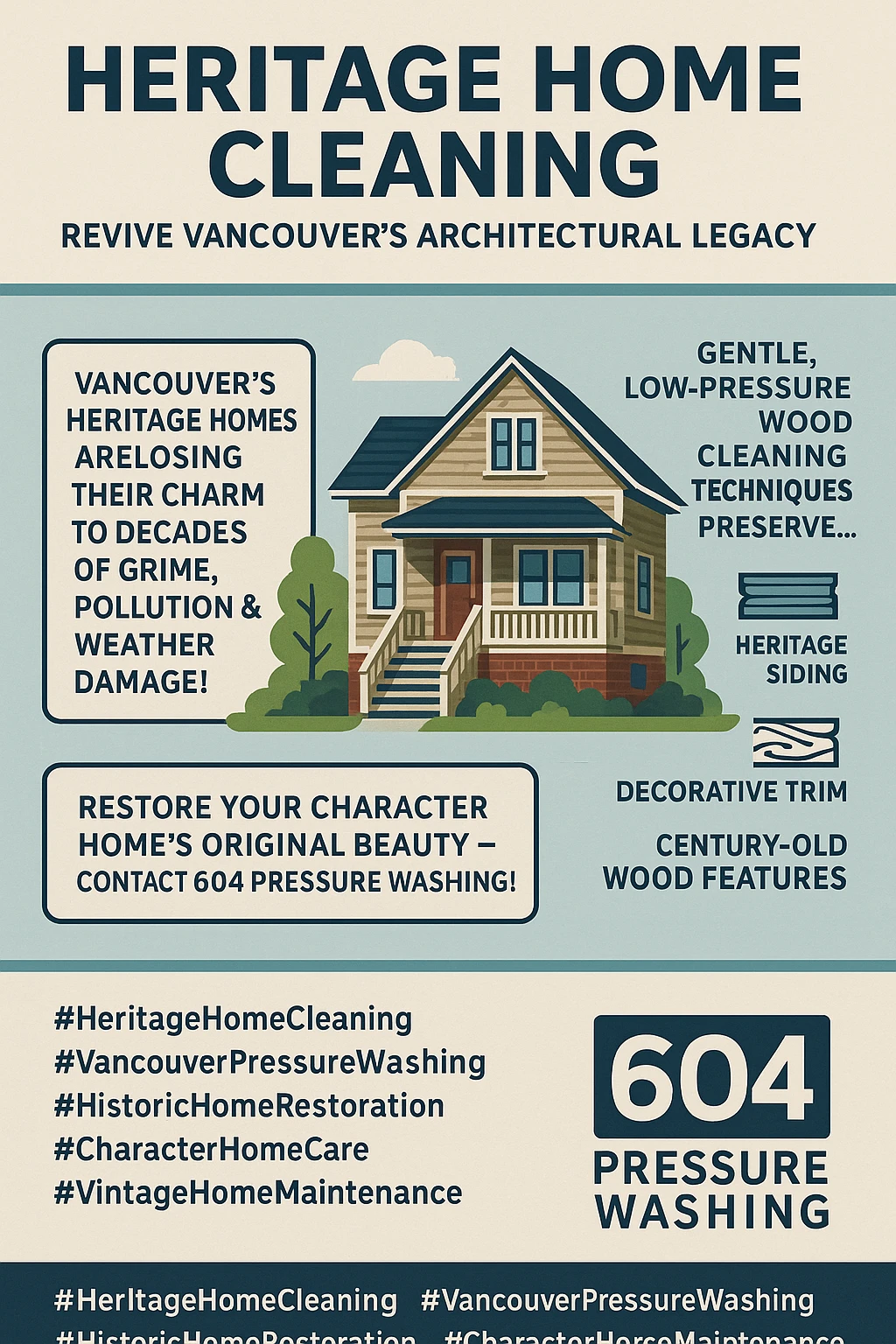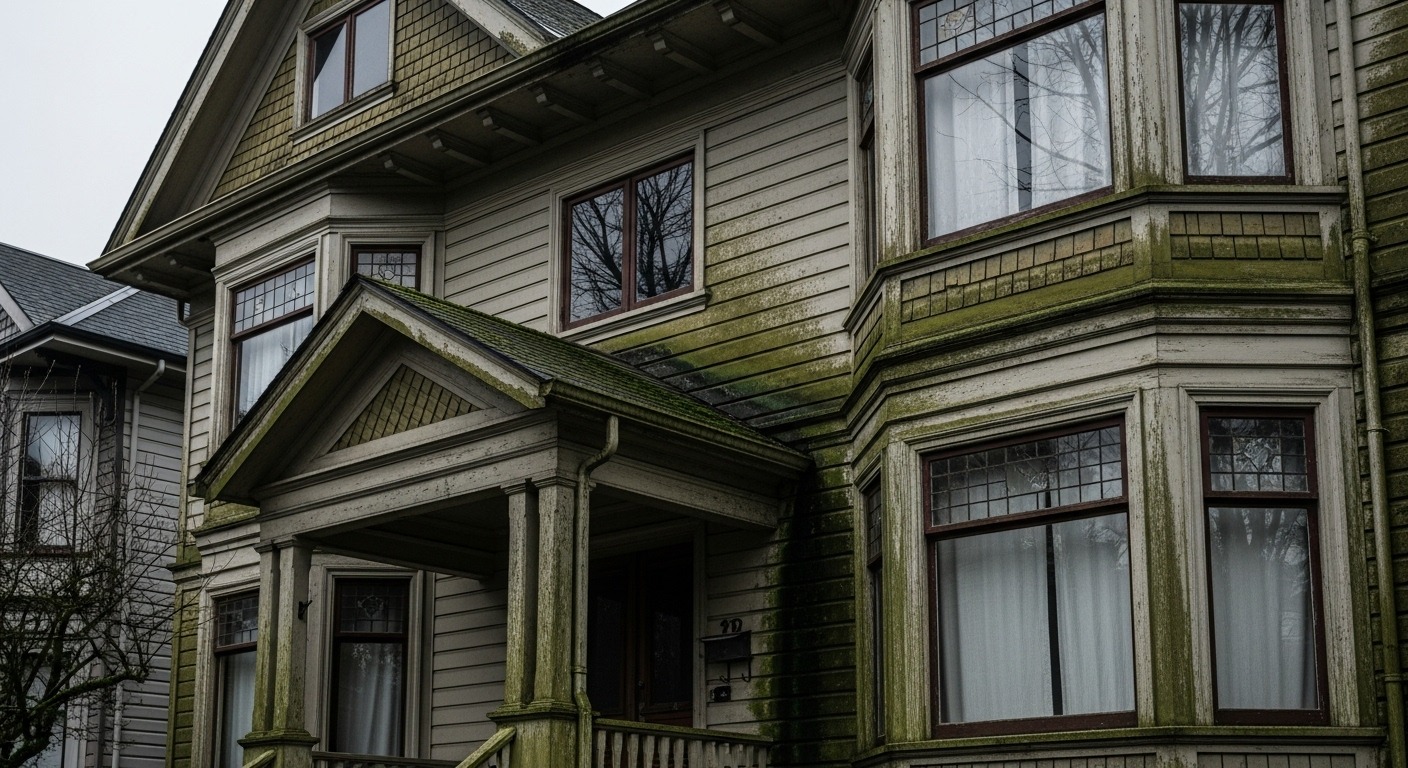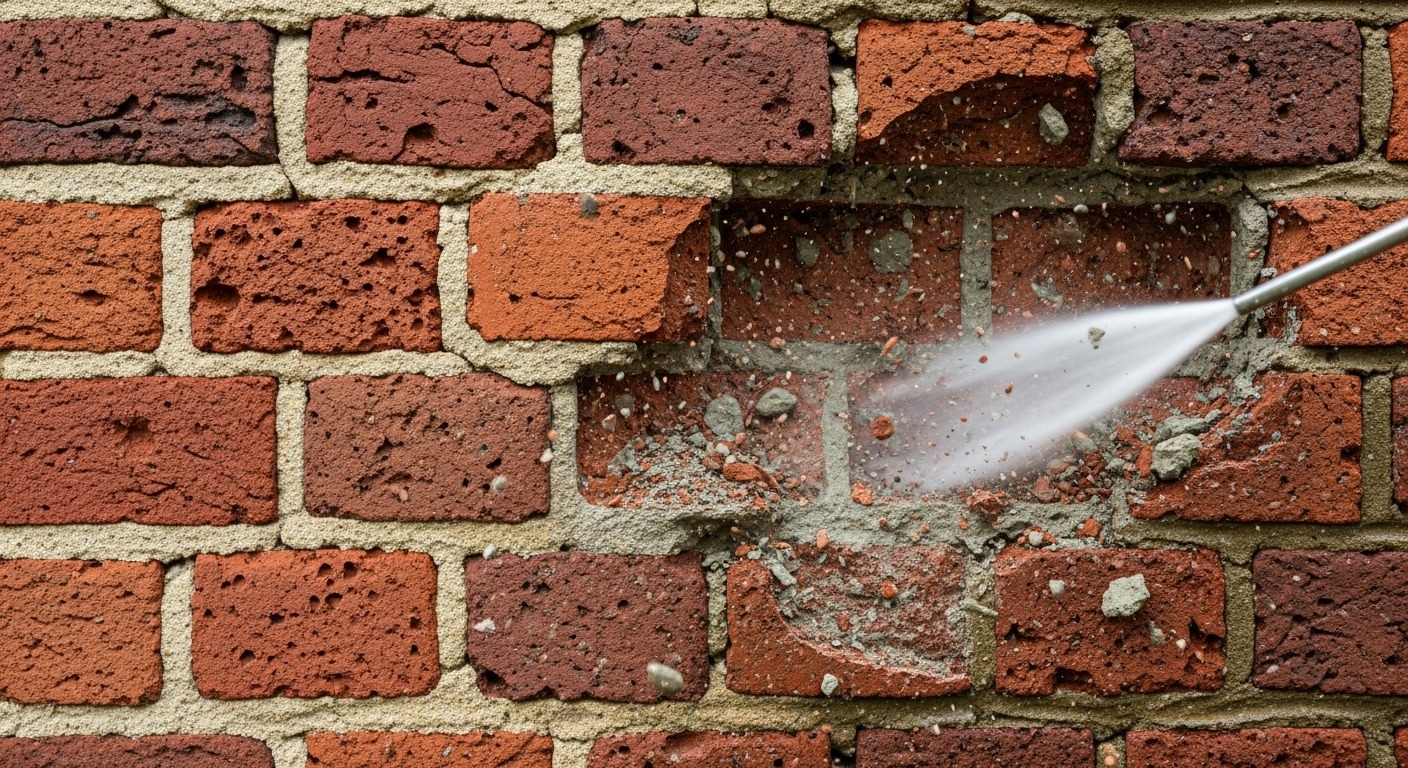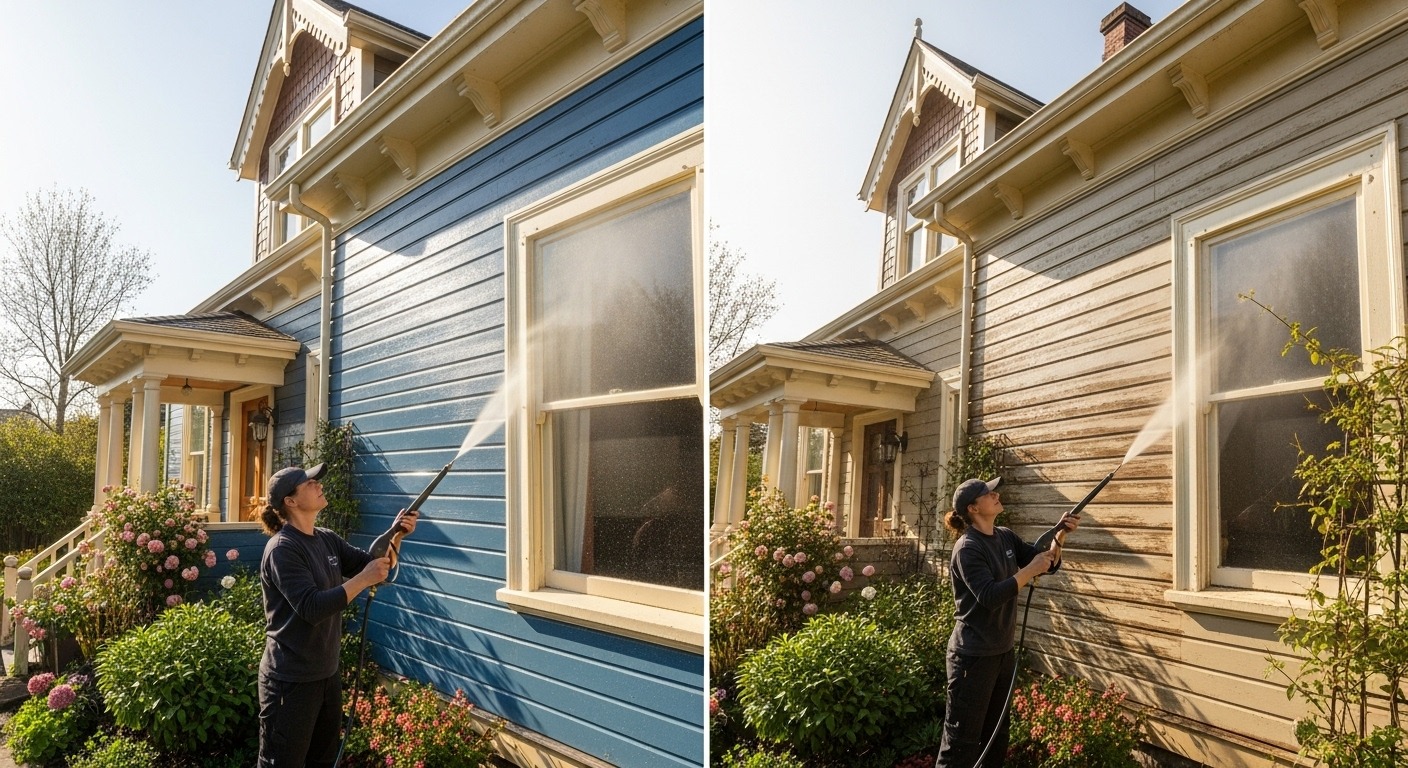Why Vancouver’s Historic Homes Are Losing Their Heritage Charm (And How Pressure Washing Restores Character Without Damaging Original Materials)
Worried about your century-old character home looking tired and weathered despite your best cleaning efforts? Discover how professional heritage home cleaning Vancouver techniques can restore your property’s original beauty without risking damage to irreplaceable historic materials.
Walking through Vancouver’s heritage districts like Strathcona or Mount Pleasant, you’ll notice something heartbreaking happening to our city’s architectural treasures. These gorgeous character homes, built before 1940 with their intricate woodwork and charming bay windows, are slowly losing their luster. What’s worse? Many well-meaning homeowners are accidentally making things worse by using cleaning methods that damage the very features that make these homes special.
The reality is that heritage home cleaning Vancouver requires a completely different approach than maintaining modern properties. These homes were built with materials and techniques that simply can’t handle today’s standard pressure washing equipment. The good news? Professional heritage property cleaning services have figured out how to bring back that original charm without destroying the historic integrity that makes these homes so valuable.
Vancouver’s unique coastal climate creates perfect storm conditions for heritage home deterioration. Our persistent rainfall, mild temperatures, and urban pollution create ideal breeding grounds for moss, algae, and atmospheric soiling that can make even the most beautiful character home look neglected. But with the right techniques, these same homes can be restored to their former glory while preserving every detail that makes them pieces of living history.
Key Outtakes:
- Historic homes require specialized cleaning techniques that differ significantly from modern property maintenance approaches, with professionals using regulated low-pressure methods under 300 PSI
- Improper pressure washing can cause irreversible damage to heritage materials, including mortar erosion, water intrusion, and destruction of original wood surfaces
- Vancouver’s coastal climate creates unique challenges including persistent moss, algae growth, and atmospheric pollution that require targeted professional treatment approaches
- Professional heritage property cleaning services support Vancouver’s character home retention incentives while protecting property values and architectural integrity
- Proper maintenance documentation can qualify homeowners for city heritage programs and help meet insurance requirements for designated historic properties

The Silent Crisis: How Vancouver’s Heritage Homes Are Deteriorating
Here’s something that might surprise you about Vancouver’s character homes. These architectural gems aren’t just getting dirty from regular use, they’re facing a perfect storm of environmental challenges that modern homes simply don’t experience. The combination of our coastal location, urban pollution, and unique climate patterns creates conditions that can turn a pristine heritage property into a weathered eyesore in just a few seasons.
Air pollution from manufacturing, road traffic, and what experts call ‘acid rain’ leads to serious deterioration of exterior materials over time. This isn’t just surface dirt we’re talking about, it’s chemical damage that eats away at the very materials these homes were built with. When you add Vancouver’s persistent moisture and mild temperatures, you get biological growth that can literally break down wood, mortar, and other original building components.

The statistics around heritage building maintenance are honestly pretty shocking. Research shows that 70% of historic buildings require significant structural repairs due to aging materials and outdated construction methods. That’s not because these homes were poorly built, quite the opposite actually. They were constructed with techniques and materials that were meant to last for generations, but they require completely different care than what most homeowners understand.
What makes Vancouver’s situation particularly challenging is our unique combination of rain, mild temperatures, and abundant greenery. This creates special maintenance challenges from moss, algae, and atmospheric pollution that you won’t find in drier climates or less urban settings. Drive through any heritage neighborhood after a wet winter and you’ll see what I mean, green growth covering beautiful wood siding, black staining on original brick, and that generally weathered look that makes these architectural treasures seem tired and neglected.
The economic impact extends beyond individual properties too. When heritage homes in a neighborhood start looking run-down, it affects property values for entire blocks and threatens Vancouver’s heritage district designations. There’s actually a direct connection between property maintenance standards and the City of Vancouver’s character home retention incentives, something many homeowners don’t realize until they’re dealing with larger maintenance issues.
The Pressure Washing Paradox: When “Cleaning” Becomes Destruction
Now this is where things get really interesting, and honestly pretty scary if you own a character home. Most homeowners see their heritage property looking weathered and think, “I’ll just rent a pressure washer and blast this clean.” What they don’t realize is that this approach can cause more damage in one afternoon than decades of weathering.
Here’s the technical reality that most people don’t understand. Typical power washers emit water at pressures ranging from 1,300 to 3,000+ PSI, which can aggressively erode historic brick’s soft, porous material. Think about that for a second, we’re talking about materials that were crafted by hand over a century ago, designed to weather naturally over time, suddenly being hit with industrial-level water pressure.

The mortar situation is even worse. Historic masonry often utilizes softer, lime-based mortar instead of modern, harder cement, which high-pressure water can easily wash out. I’ve seen homeowners accidentally remove chunks of original mortar in just minutes with standard pressure washing equipment. Once that mortar is gone, you’re looking at expensive restoration work that requires specialized craftspeople who understand heritage building techniques.
But the most insidious damage happens where you can’t see it. Old homes already have imperfections that can let water get into places it shouldn’t be, and pressure washing gives water more opportunities to sneak in. This water intrusion can lead to rot, mold, and structural damage that might not show up for months or even years after the initial cleaning.
What makes this particularly frustrating is that many homeowners don’t realize they’re causing damage until it’s too late. The immediate result of pressure washing often looks pretty good, it removes surface dirt and biological growth quickly. But the long-term consequences include compromised structural integrity, water damage, and the destruction of original architectural details that can never be truly replaced.
Professional Heritage Home Pressure Washing: The Science of Preservation
The difference between destructive cleaning and proper heritage maintenance comes down to understanding both the science of preservation and the specific characteristics of historic building materials. Professional heritage cleaning services don’t just use gentler equipment, they use completely different approaches based on decades of conservation research and testing.

The industry standard for heritage property cleaning specifies that water washing should use low jet pressure not to exceed 300 pounds per square inch (PSI) for water-soluble dirt and chemical compounds. That’s a massive difference from standard pressure washing, and it requires specialized equipment designed specifically for restoration work rather than general cleaning applications.
But pressure is just one part of the equation. Different historic materials require completely different treatment approaches. For example, professionals working on heritage properties know to dust delicate finishes with microfiber cloths and use pH-neutral solutions for hardwood floors and vintage tiles. They understand which cleaning solutions will enhance original materials versus which ones might cause chemical reactions that lead to deterioration.
The assessment process itself is fascinating. Before any cleaning begins, professionals conduct detailed testing that requires additional technical expertise from materials scientists, architectural conservators, and sometimes even microbiologists to determine the gentlest method possible for each specific surface and type of soiling.
This scientific approach extends to understanding how different types of biological growth affect various building materials. Moss removal from original wood siding requires different techniques than algae treatment on heritage brick or biological staining on historic mortar joints. Each situation gets evaluated individually and treated with methods specifically designed for that combination of materials and environmental challenges.
Vancouver Heritage House Restoration: Beyond Basic Cleaning
What separates professional heritage cleaning from basic maintenance is the integration of preservation principles with practical restoration needs. In Vancouver, this becomes particularly important because our character houses typically built before 1940 must meet established criteria for the city’s retention programs, and proper maintenance documentation plays a crucial role in qualifying for these valuable incentives.
Professional services understand that heritage home maintenance isn’t just about making things look clean, it’s about preserving the architectural integrity while addressing the specific environmental challenges that Vancouver’s climate presents. They adjust scheduling to account for our rainy seasons, ensuring optimal conditions for both effective cleaning and protection of surrounding landscaping and architectural features.
The seasonal approach makes a huge difference in results and long-term preservation. Vancouver’s heritage homes experience different types of soiling and biological growth throughout the year, and professional cleaners time their work to address these challenges when weather conditions optimize both cleaning effectiveness and drying times to prevent moisture

